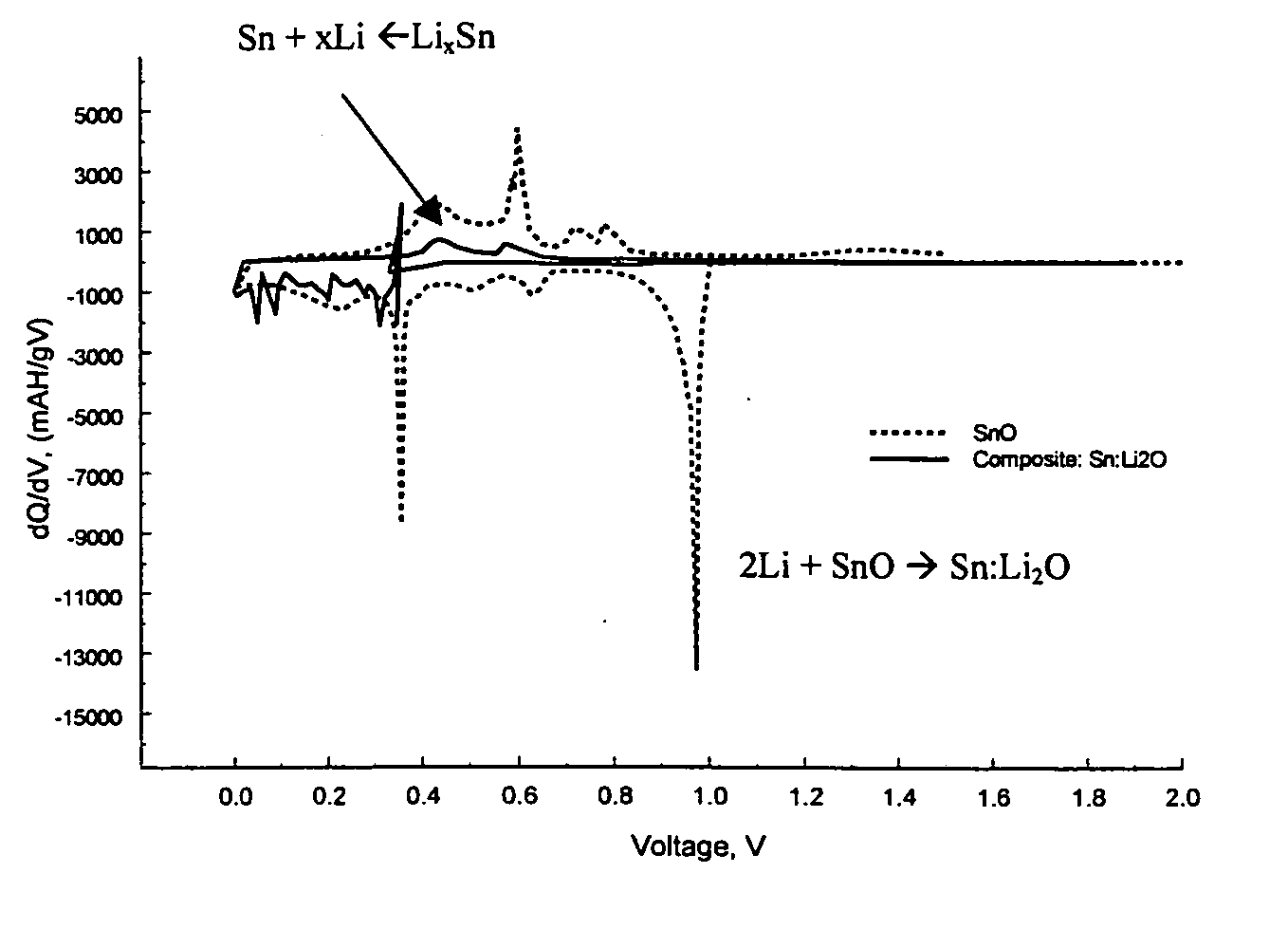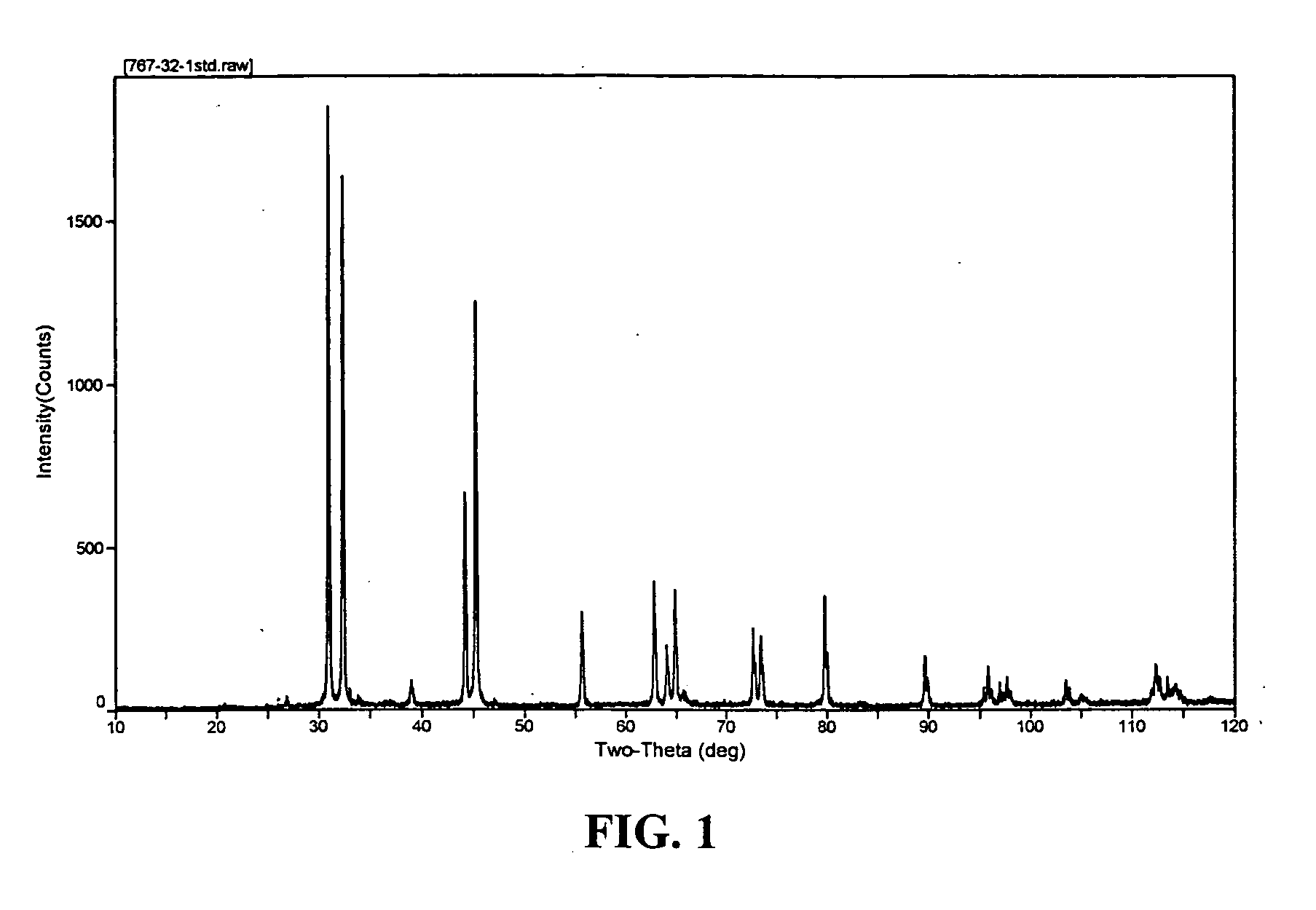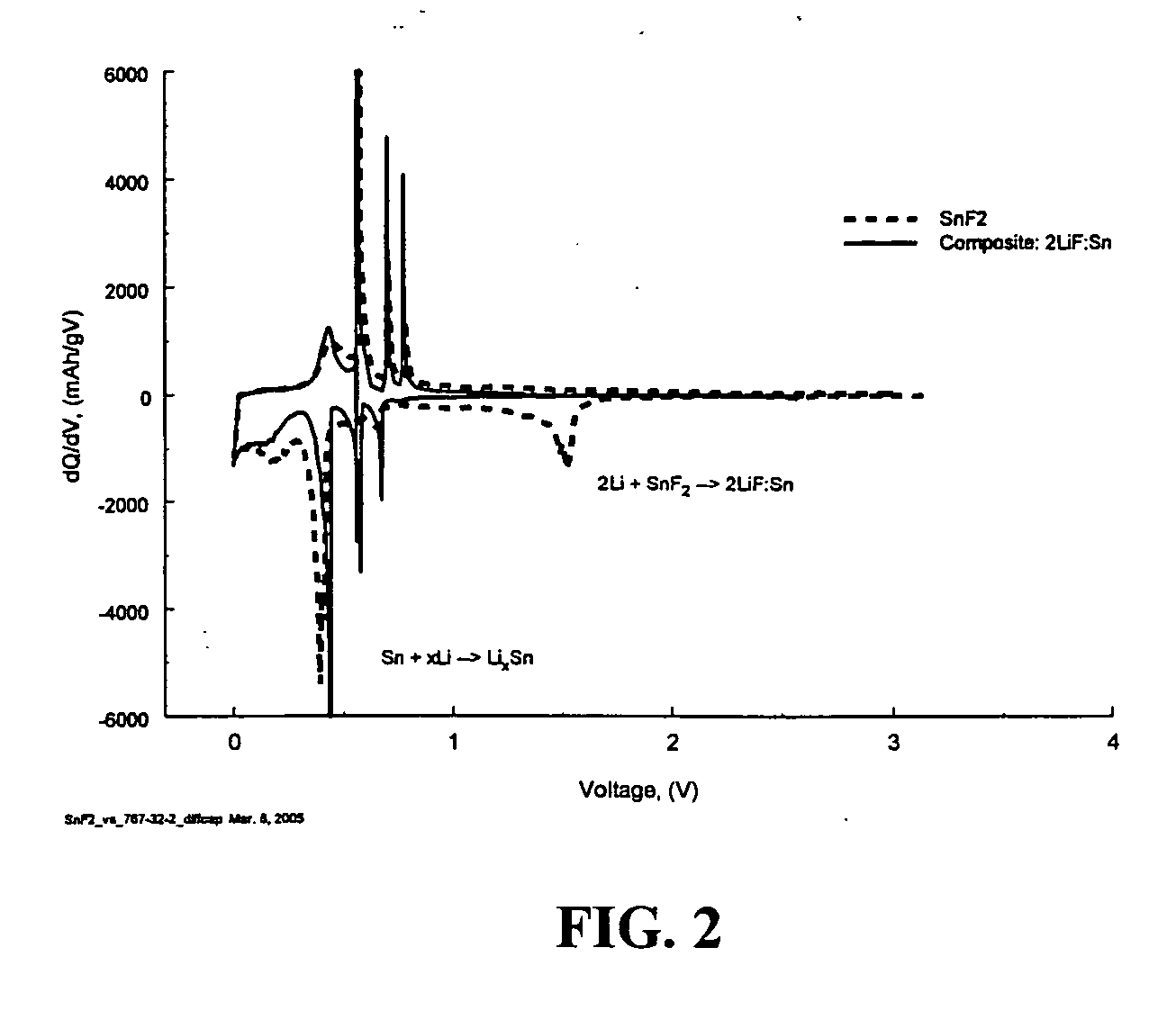Composite materials of nano-dispersed silicon and tin and methods of making the same
a technology of nano-dispersed silicon and tin, which is applied in the field of composite materials, can solve the problems of reducing the reversible capacity of the battery, lithium the battery that reacts with the oxygen during the first charge,
- Summary
- Abstract
- Description
- Claims
- Application Information
AI Technical Summary
Problems solved by technology
Method used
Image
Examples
example 1
[0059] The Sn:2LiF composite was generated according to the following reaction:
2Li+SnF2→2LiF+Sn
[0060] Materials preparation: SnF2 (99%, Aldrich) was used with stabilized lithium metal powder (SLMP) from FMC Corporation.
[0061] First, 1.0 g SnF2 was combined with 0.093 g SLMP. There was five percent excess in SLMP to account for the protective coating on the SLMP particle surface and thereby to insure the completion of the reaction. Materials were weighed and premixed in an Argon filled glove box. Premixing was done with a soft brush to avoid initiating any reaction on contact. After premixing the materials were loaded into a 50 ml stainless steel ball mill jar along with ten 10 mm stainless steel balls (4 g each). The jars were sealed inside the glove box and transferred to an Retsch PM100 planetary ball mill. The materials were ball milled at 400 rpm for ten minutes. There was a one-minute pause for every two minutes to allow heat to dissipate. After ball milling the jar was retu...
example 2
[0067] The Sn:Li2O composite was generated according to the following reaction:
2Li+SnO→Li2O+Sn
[0068] Materials preparation: SnO (10 μm 99%, Aldrich) was used with stabilized lithium metal powder (SLMP) from FMC Corporation.
[0069] First, 1.0 g SnO was combined with 0.101 g SLMP. There was five percent excess in SLMP to account for the protective coating on the SLMP particle surface and thereby to insure the completion of the reaction. Materials were weighed and premixed in Argon filled glove box. Premixing was done with a soft brush to avoid initiating any reaction on contact. After premixing the materials were loaded into a 50 ml stainless steel ball mill jar along with ten 10 mm stainless steel balls (4 g each). The jars were sealed inside the glove box and transferred to an Retsch PM100 planetary ball mill. The materials were ball milled at 400 rpm for ten minutes. There was a one-minute pause for every two minutes to allow heat to dissipate. After ball milling the jar was retu...
example 3
[0075] The Sn:2Li2O composite was generated according to the following reaction:
4Li+SnO2→2Li2O+Sn
[0076] Materials preparation: SnO2 (99.9%, Aldrich) was used with stabilized lithium metal powder (SLMP) from FMC Corporation.
[0077] First, 1.0 g SnO2 was combined with 0.19 g SLMP. There was five percent excess in SLMP to account for protective coating on the SLMP particles surface and thereby to insure the completion of the reaction. Materials were weighed and premixed in an Argon filled glove box. Premixing was done with a soft brush to avoid initiating any reaction on contact. After premixing the materials were loaded into a 50 ml stainless steel ball mill jar along with ten 10 mm stainless steel balls (4 grams each). The jars were sealed inside the glove box and transferred to an Retsch PM100 planetary ball mill. The materials were ball milled at 400 rpm for ten minutes. There was a one-minute pause for every two minutes to allow heat to dissipate. After ball milling the jar was ...
PUM
 Login to View More
Login to View More Abstract
Description
Claims
Application Information
 Login to View More
Login to View More - R&D
- Intellectual Property
- Life Sciences
- Materials
- Tech Scout
- Unparalleled Data Quality
- Higher Quality Content
- 60% Fewer Hallucinations
Browse by: Latest US Patents, China's latest patents, Technical Efficacy Thesaurus, Application Domain, Technology Topic, Popular Technical Reports.
© 2025 PatSnap. All rights reserved.Legal|Privacy policy|Modern Slavery Act Transparency Statement|Sitemap|About US| Contact US: help@patsnap.com



